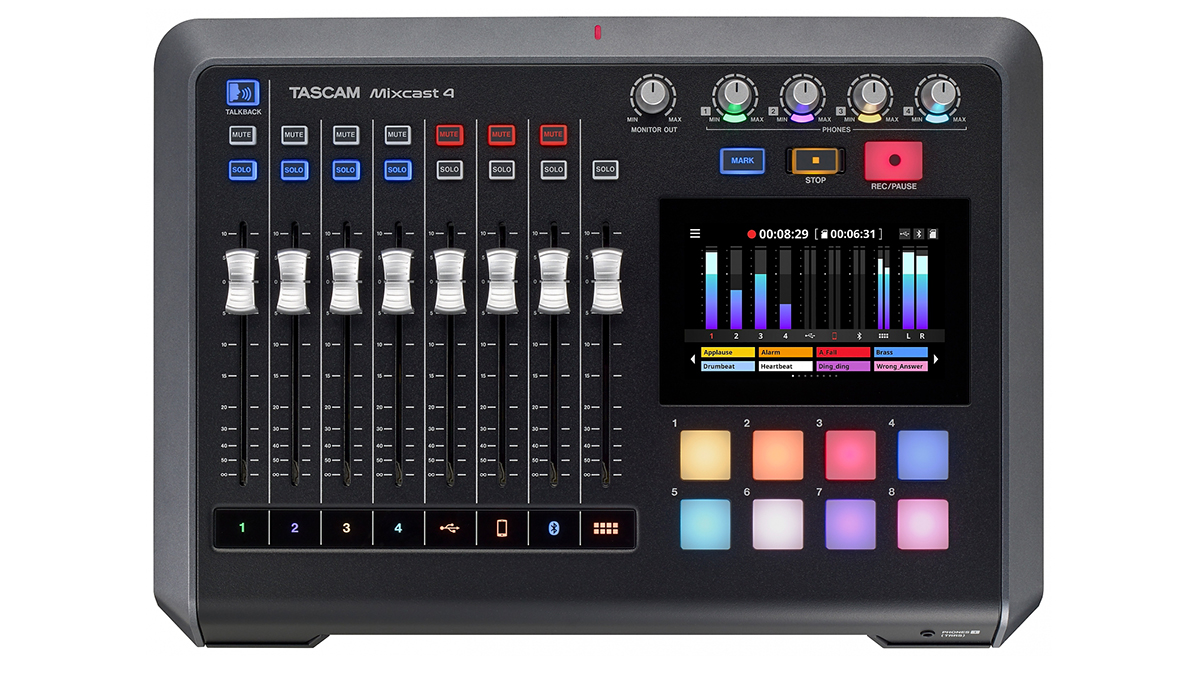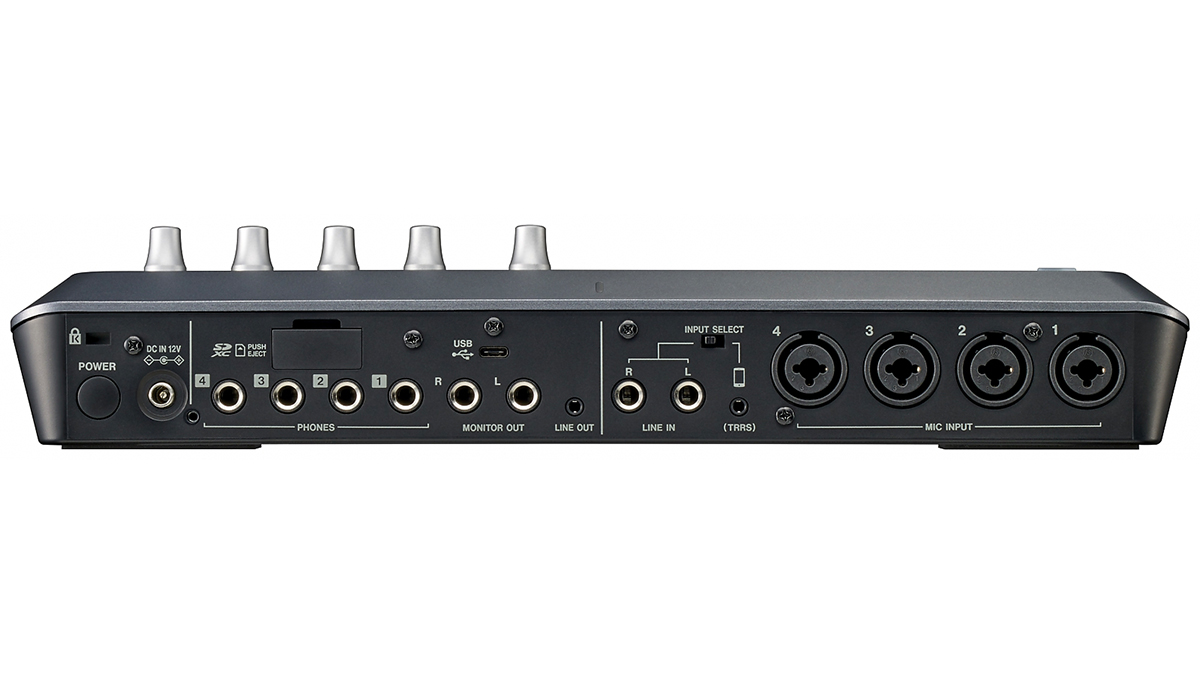Watch Sarah Longfield get her podcasting on with the “super-versatile” Tascam Mixcast 4
The retro-looking mixer is a one-stop shop for podcast creation, live streaming, event production and voiceover work
The Tascam Mixcast 4 might look like an old-school Portastudio, but it’s designed for thoroughly modern work – namely, podcast creation, live streaming, event production and voiceover work.
Think of it as your “go-to mixer for podcasting,” says guitar ace Sarah Longfield in the above demo video. “It’s super-intuitive, super-easy to use and it records directly to an SD card so you can literally just plug it in and start recording on the go, which is great for interviews and so many other applications.”
In addition to being easy to operate, the Mixcast 4 “has these cool effects and you can just add different effects to different sample pads,” she says.
What else does the Mixcast 4 feature? How about four TRS/XLR combo jack mic inputs and four headphone outputs, which makes it perfect for those multiple participant podcasts. Additionally, there’s auto-mixing functionality, and you can scroll menus and adjust settings via the easy-to-see five-inch colour touchscreen.

There are also eight customisable sound pads that can be used to trigger preset effects and sounds, eight large channel faders with mute and solo buttons on each channel, a talkback button for announcements to podcast participants and a mark button to set marks for specific events or phases of the podcast during recording.
Furthermore, the Mixcast 4 can function as a 14-in/2-out USB audio interface, and Bluetooth connectivity makes it easy to record phone calls or background music from paired devices.
The companion Tascam Podcast Editor software, meanwhile, is designed to offer simple audio editing, track arming, and the ability to configure and assign sound effects and background music to the pads. It promises full integration with the Mixcast 4 hardware, and runs on Windows, macOS and iOS, with an Android version to come.
Want all the hottest music and gear news, reviews, deals, features and more, direct to your inbox? Sign up here.
That’s the technical overview. But what about the “Sarah friendly” overview?

“So my favorite thing about this is that you can choose condenser or dynamic mic channels, and then go into voice settings and – this is really cool – manually sort of EQ with a high shelf and a low shelf,” Longfield says.
There’s also audio enhancement settings “which just make everything a little bit more clear,” she says. “It really cuts the consonants."
A “de-esser,” meanwhile, does away with those annoying whistling “s” sounds, and a noise suppressor decreases outside noise. “So if you’re interviewing someone out on the street and you don’t want to hear wind it can help with that,” Sarah says.
In general, Sarah concludes, the Tascam Mixcast 4 "is an awesome product if you want to get into podcasting or if you’re already into podcasting. It’s super-versatile, and we already know that digital streaming is not really going anywhere anytime soon."
"So if this is something that you really want to be serious about, this is an awesome investment.”
For more information on the Mixcast 4, head to Tascam.